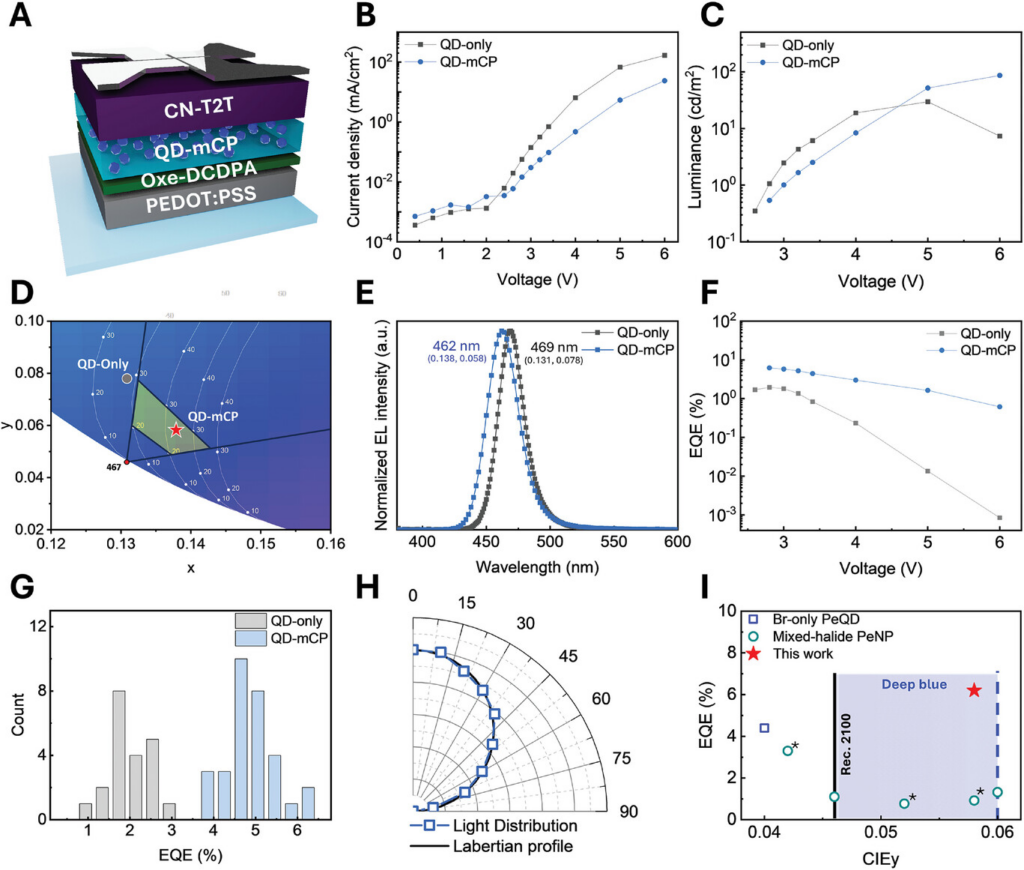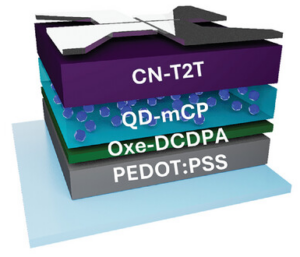Deep-blue light is one of the three primary colors (red, green, and blue) in display technologies. Achieving accurate and efficient deep-blue emission is crucial for expanding the color gamut and improving the overall color quality of displays. It enables the production of more vibrant and true-to-life colors, which is important for high-definition televisions, computer monitors, and mobile device screens.

Industry standards, such as the ITU-R Recommendation BT.2100, set requirements for the color space and dynamic range in displays. Deep-blue emission with specific color coordinates (CIEy < 0.06) is considered necessary to meet these standards.
While perovskite quantum dots (PeQDs) have shown great promise for LEDs due to their high color purity and tunability, achieving high efficiency in deep-blue has been difficult. New research suggests a novel solution that may provide a way to meet the challenges of deliver deep blue PeQDs. Researchers developed a quantum dot-in-organic solid solution (QD-mCP solid solution) to physically separate the colloidal PeQDs. This separation reduces interactions between quantum dots, such as electronic coupling and energy transfer, which are known to cause redshifts in emission. By maintaining a distance between the quantum dots, the solid solution helps retain the deep-blue emission in the film state.
The researchers used a hole-transporting organic molecule, N,N′-dicarbazolyl-3,5-benzene (mCP), as the organic matrix. The mCP molecule has a deep-lying highest occupied molecular orbital (HOMO) level, which suppresses the formation of exciplex emission that can degrade color purity and efficiency. This choice of material helps maintain the blue shift in the emission spectrum and achieves a high external quantum efficiency.
The study focused on using PeQDs with a size of approximately 4 nm, which emit deep-blue light at around 460 nm with high photoluminescence quantum yield (PLQY) in a colloidal solution. By preventing further size reduction, which often introduces defects and reduces PLQY, the researchers retained high-efficiency deep-blue emission.
By dispersing the PeQDs in the mCP matrix, the researchers effectively suppressed the electronic coupling and Förster resonance energy transfer (FRET) that typically occur when PeQDs are closely packed. This suppression prevented the redshift of the emission spectrum, allowing for deep-blue emission in the film state.
The researchers fabricated PeLEDs using the QD-mCP solid solution as the emissive layer. They optimized the device structure to achieve balanced charge injection and minimized interfacial exciton quenching. This included using materials with suitable band alignment and ensuring solvent orthogonality to avoid undesirable emissions.
Reference
Jang, K. Y., Hwang, S. Y., Woo, S.-J., Yoon, E., Park, C.-Y., Kim, S. Y., Kim, D.-H., Kim, H., Park, J., Sargent, E. H., & Lee, T.-W. (n.d.). Efficient Deep-Blue Light-Emitting Diodes Through Decoupling of Colloidal Perovskite Quantum Dots. Advanced Materials, n/a(n/a), 2404856. https://doi.org/10.1002/adma.202404856

